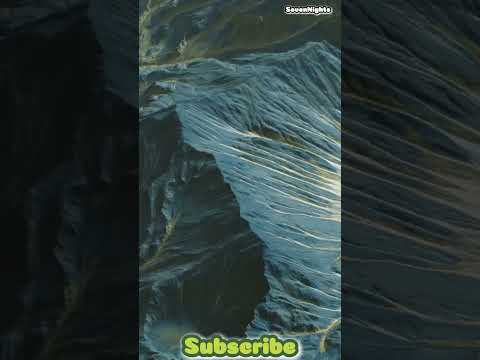
Nestled in the Arabian Sea, 240 kilometers east of the Horn of Africa and 380 kilometers south of the Arabian Peninsula, Socotra Island is one of the world’s most isolated landforms and a destination like no other. Known for its surreal and unique ecosystem, Socotra is often referred to as the “Galápagos of the Indian Ocean,” offering adventurers and nature lovers an experience that feels like stepping onto another planet.
### A Natural Wonder
Socotra belongs to an archipelago that comprises four islands, with Socotra being the largest. Its isolation from the mainland has resulted in a high level of endemism; nearly 37% of its plant species, 90% of its reptile species, and 95% of its land snail species do not exist anywhere else on Earth. This extraordinary biodiversity has earned Socotra a place on UNESCO’s World Heritage List.
### Alien-Like Landscapes
One cannot discuss Socotra without mentioning its iconic Dragon’s Blood Trees, Dracaena cinnabari. With umbrella-shaped canopies and red sap that gives them their fiery name, these trees are a testament to Socotra’s alien-like vibe. The landscape also features bizarre-looking bottle trees (Desert Rose or Adenium socotranum) and ancient cucumber trees (Dendrosicyos socotrana), each adding to the island’s otherworldly feel.
### Rich Biodiversity
Beyond its peculiar flora, Socotra is home to a plethora of unique fauna. The island harbors various birds like the Socotra starling, sunbird, bunting, sparrowhawk, and several endemic species such as the Socotra warbler. The surrounding seas teem with vibrant coral reefs that host diverse marine life including many species of fish and several endangered sea turtles.
### Adventure and Activities
Socotra offers endless opportunities for adventure enthusiasts. Hiking through Dixam Plateau reveals panoramic views alongside encounters with the native flora and fauna. For beach lovers, Qalansiyah Beach provides pristine sands coupled with stunning turquoise waters perfect for swimming or just relaxing by the shore.
Rock climbing enthusiasts will find their challenge on sheer cliffs overlooking the sea at Skand Peak. Meanwhile, underwater adventurers can enjoy snorkeling or diving in warm waters around Shuab Bay, exploring rich marine biodiversity.
### Cultural Insights
The island is not just about natural beauty; it also presents a rich cultural tapestry reflecting ancient traditions shaped by various influences throughout history due to its strategic location along ancient trade routes. About 60,000 inhabitants live on Socotra; their language (Socotri) is an ancient Semitic language that provides insights into historical linguistics.
### Sustainable Travel Tips
Visiting such a pristine natural environment comes with responsibilities toward conservation efforts. Tourists are encouraged to practice sustainable travel habits by minimizing plastic use, respecting wildlife habitats, supporting local businesses by purchasing local handicrafts directly from artisans rather than from hotels or big stores.
### Getting There
Reaching Socotra involves some planning as it is relatively isolated but accessible via flights from major cities like Abu Dhabi or Cairo depending mainly on current geopolitical situations which affect accessibility greatly due to Yemeni mainland conflicts.
### Conclusion
For those yearning for unmatched natural beauty infused with deep-rooted cultural experiences away from crowded tourist spots – Socotra Island beckons as a true adventurer’s paradise where earth meets imagination in spectacular fashion.
Visiting this alien landscape not only promises unforgettable sights but also instills greater appreciation for Earth’s vast ecological diversity — making it a must-visit destination for any true wanderlust traveler seeking adventures beyond ordinary landscapes.
